
Teaching and learning resources for the construction industry with NVQ and Diploma Assessment Criteria
The learner will:
2. be able to prepare, set out a selection of brickwork assessments is listed below
3. be able to set up and maintain a clean and safe working environment.
Unit 005 Constructing Half Brick Walling
Unit 118 Constructing Block Walling
Unit 119 Constructing Half Brick Return Corners
Unit 120 Constructing Cavity Walls in Brickwork & Block Work
Unit 121 Constructing One Brick Walling

Contact between cement powder and body fluids (eg sweat and eye fluid) may cause irritation, dermatitis or burns.
If such contact occurs, the affected area should be washed without delay with plenty of clean water.
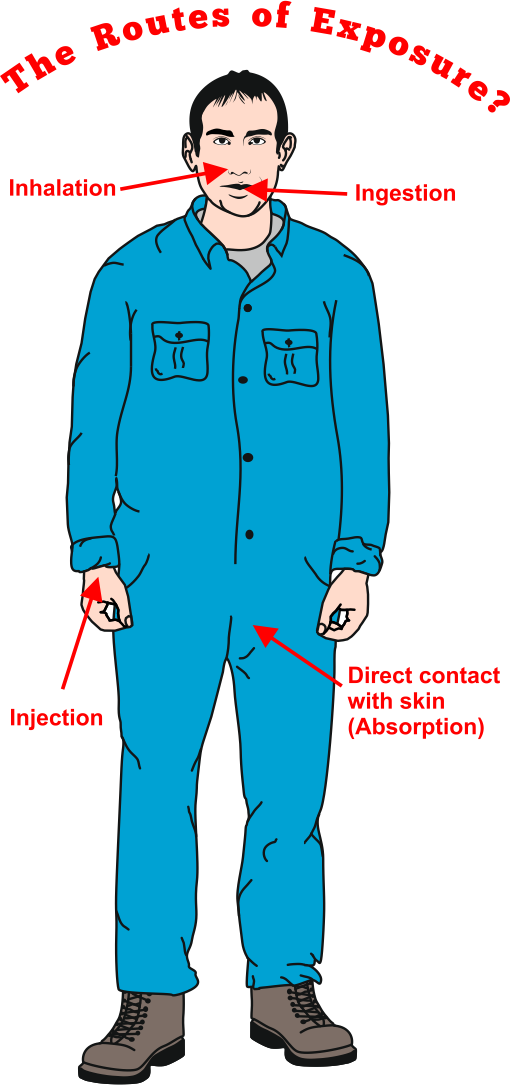
Routes of Exposure
Eye Contact
Do not allow the casualty to rub their eyes.
Wash eyes immediately with clean water for at least 15 minutes and seek medical advice without delay.
Skin Contact
Wash the affected area thoroughly with soap and water.
If skin irritation or pain continues, seek medical advice.
Clothing
Contaminated by wet cement, concrete or mortar should be removed and washed thoroughly before re-use.
Ingestion
Do not induce vomiting.
Wash out mouth with water and give patient plenty of water to drink.
Inhalation
If irritation occurs, move the patient to fresh air.
If nose or airways become inflamed seek medical advice.
You can fail your assessment if you do not wear or use Personal Protection Equipment (P.P.E.) correctly and you must check your P.P.E for any damage before using, and report any damage or any issues with your (P.P.E.) to your assessor.
Failing to wear the right P.P.E. could lead to an injury or a long-term physical problem
Remember under the health and safety at work Act 1974 section 8
No person shall intentionally or recklessly interfere with or misuse anything provided in the interests of health, safety or welfare in pursuance of any of the related statutory provisions.
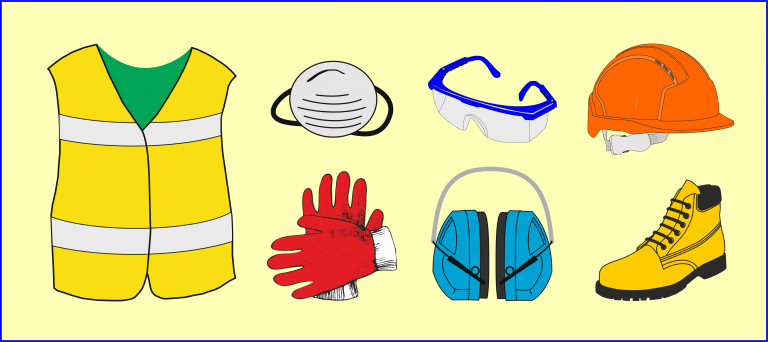
Selection P.P.E.
Making the workplace safe includes providing instructions, procedures, training and supervision to encourage people to work safely and responsibly in your practical assessment activity.
Even where engineering controls and Safe Systems of Work have been applied, some hazards might remain.
These include injuries to:
• The lungs, eg from breathing in contaminated air
• The head and feet, eg from falling materials
• The eyes, eg from flying particles or splashes of corrosive liquids
• The skin, eg from contact with corrosive materials
• The body, eg from extremes of heat or cold
• PPE is needed in these cases to reduce the risk.
Additional information on this subject can be found at the following links:
Lime mortar they’re generally referring to mortar made with hydraulic lime or fat lime putty, sand with no cement.
Your training centre will more than likely use hydra lime instead of cement this enables the training centre to reuse all the materials in your bricklaying assessment.
Lime mortar does not set hard which is ideal for teaching practical activities in brickwork.
Bricklayers require a mortar mix which is described as ‘fatty’.
This means it hangs on the trowel without being sticky, it spreads easily and it does not stiffen too quickly or too slowly.
The mortar should meet other requirements to ensure that it retains its strength and durability during the life of the brickwork or blockwork.
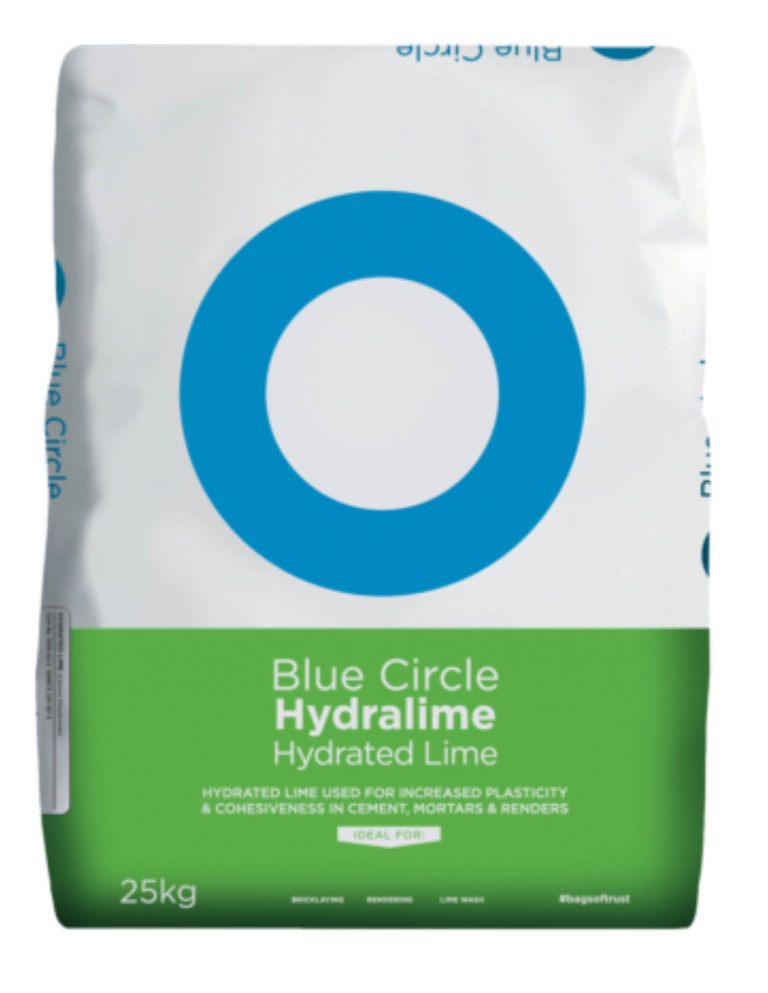
Hydrated Lime
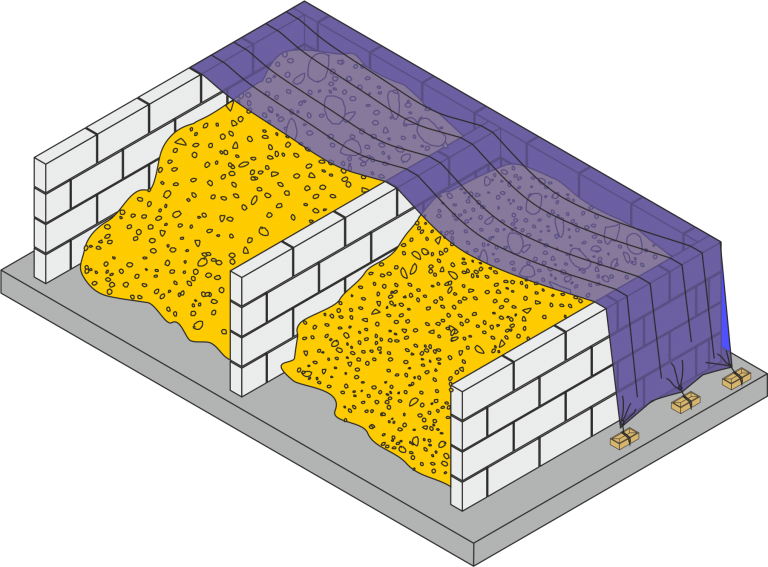
Sand Bays
Sand is often referred to as a fine aggregate. It is normally dug from a pit or a quarry and should be clean and free from impurities.
Sea sand contains salt, which will adversely affect the mortar and should not be used unless it has been washed and supplied by a reputable firm.
Good mortar sand should be well graded so that it contains a mixture of fine, medium and coarse particles.
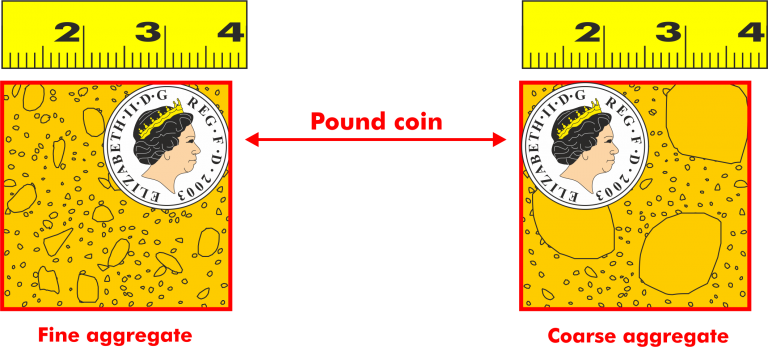
Aggregates - Sand
Fine aggregate describes the natural sand, crushed stone sand or similar, which pass through a 5mm sieve.
Coarse aggregate describes materials such as natural gravel, crushed gravel or crushed stone that is retained on a 5mm sieve.
The usual coarse aggregate used in concrete is 20mm down to 10mm.
Additional information on this subject can be found at the following links:
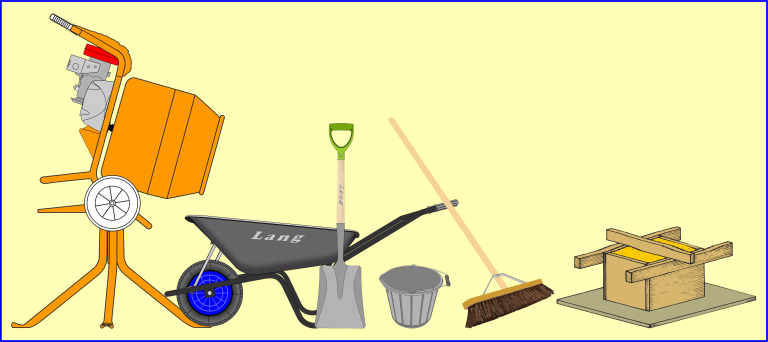
Selection of Tools for Mixing
Tools and equipment should be washed thoroughly after use and maintained in a clean condition.
For ease of mixing the area should be flat, hard, e.g. Concrete, mixing board, and free from dust and other debris.
It is important that stones are not mixed in with mortar as these can affect the true laying of bricks and blocks.
Mortar will stain the surface over which they have been mixed even when the area is washed down after the mixes are used.
An area should be chosen where stains do not matter.
If possible, the area should also be close to where the work is taking place and/or near the stored materials.
The area should also be large enough to enable you to use all the tools and equipment Safely.

Work Person Sweeping
Additional information on this subject can be found at the following links:
The most common way of measuring the various proportions of sand, aggregate and cement is by volume.
This can be done using any type of clean, dry container but the usual methods are by using a gauge box, which is a square open-topped box with handles, or 10 litres builder’s bucket.
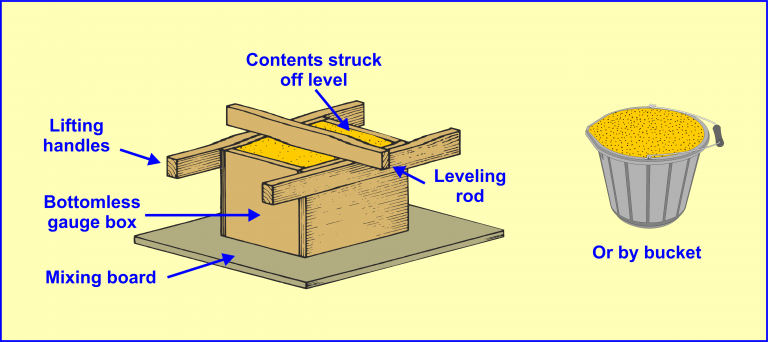
Gauge Box & Bucket
The box or bucket is filled with material level with the top edge.
It is bad practice to measure by the shovel full since the amounts can vary considerably and it is essential that stated proportions are adhered to.
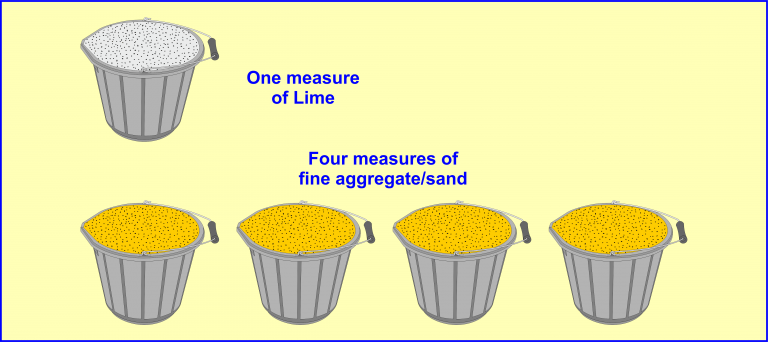
Gauging with buckets
Using a shovel, repeatedly turn the ingredients into a pile making sure that all the materials are thoroughly mixed together.
Form a hole or indentation in the middle of the pile of dry mix.
Add water to the mix.
The amount of water should be approx. 0.6 of the weight of cement (see water cement ratios).
The materials are mixed with the water from the middle until all the water has been incorporated into the mix.
The materials are then turned repeatedly until the mix is a fatty workable mass.
The mix is now ready for use.
Adding more water to the mix will make the mortar easier to lay but it will reduce the strength by up to 30%.
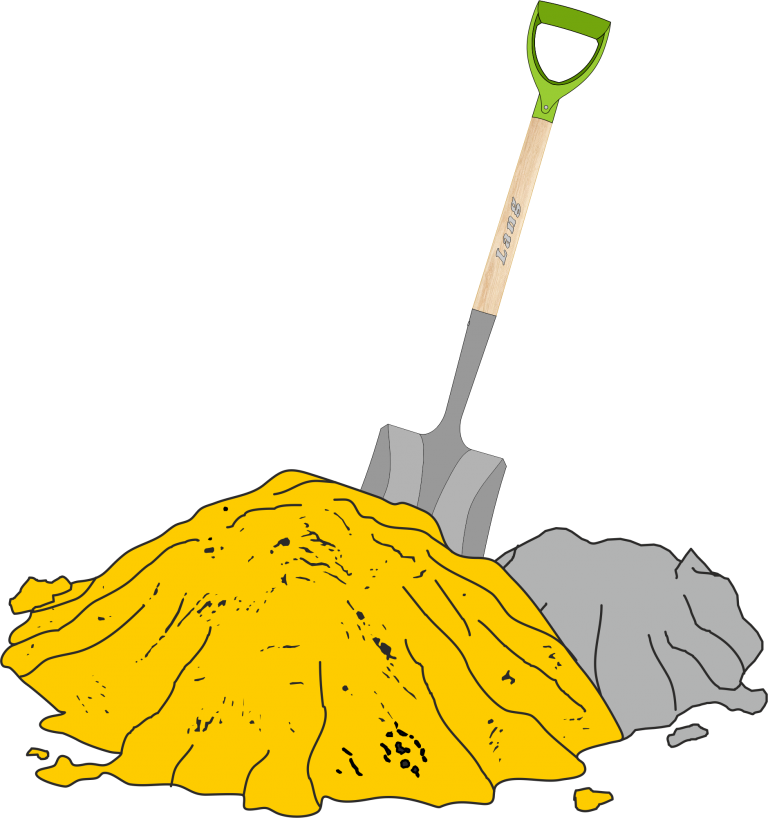
Sand Cement and a Shovel
The following procedure is an example of how a mechanical mixer is set up and used on site:
Set up the mixer according to the manufacturer’s instructions, or those of the site supervisor.
Ensure that the correct power supply is available.
Ensure sufficient materials and equipment are available.
Carry out all safety checks and start the mixer.
Add the required water.
Add the pre-gauged materials,
adding the sand content first.
Add more water if required.
Allow the materials to mix thoroughly for approximately three minutes; never longer as segregation may occur.
Turn out the mixed materials into a container or wheelbarrow.
When work is complete, clean out the mixer.
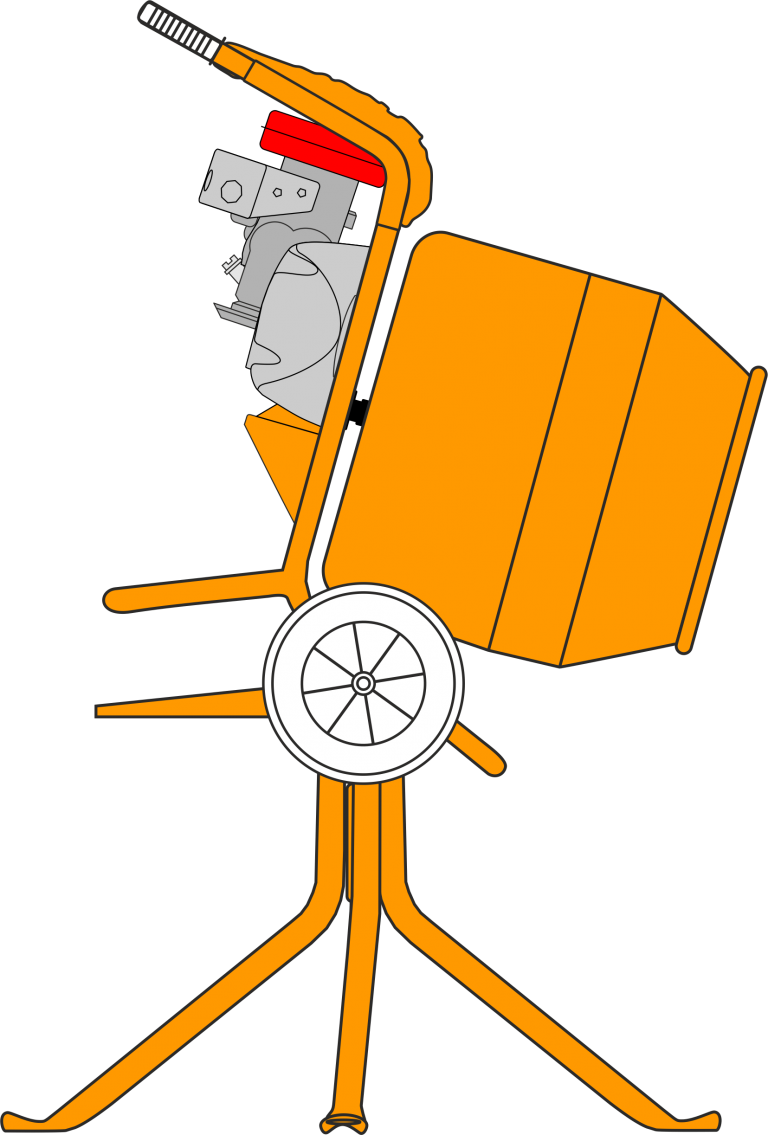
Cement Mixer
The mixer must be cleaned thoroughly but carefully.
The mixer should be cleaned using plenty of water and a few shovels full of gravel.
Do not attempt to clean the mixer using broken bricks as these may damage the mixer or at least reduce the working life of the mixer.
Always immobilise the mixer at the end of a working day by disconnecting the power supply and/or storing the starting handle in a secure area.
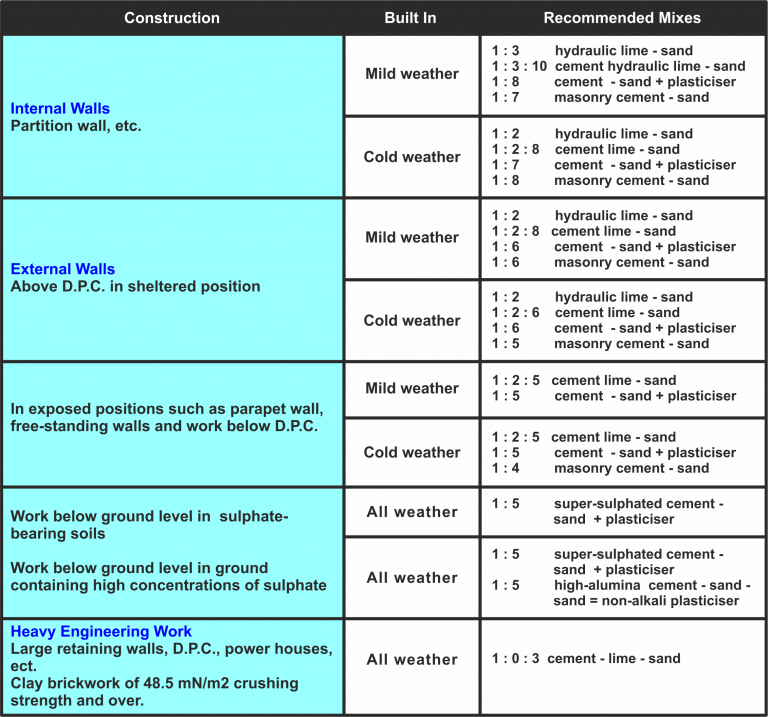
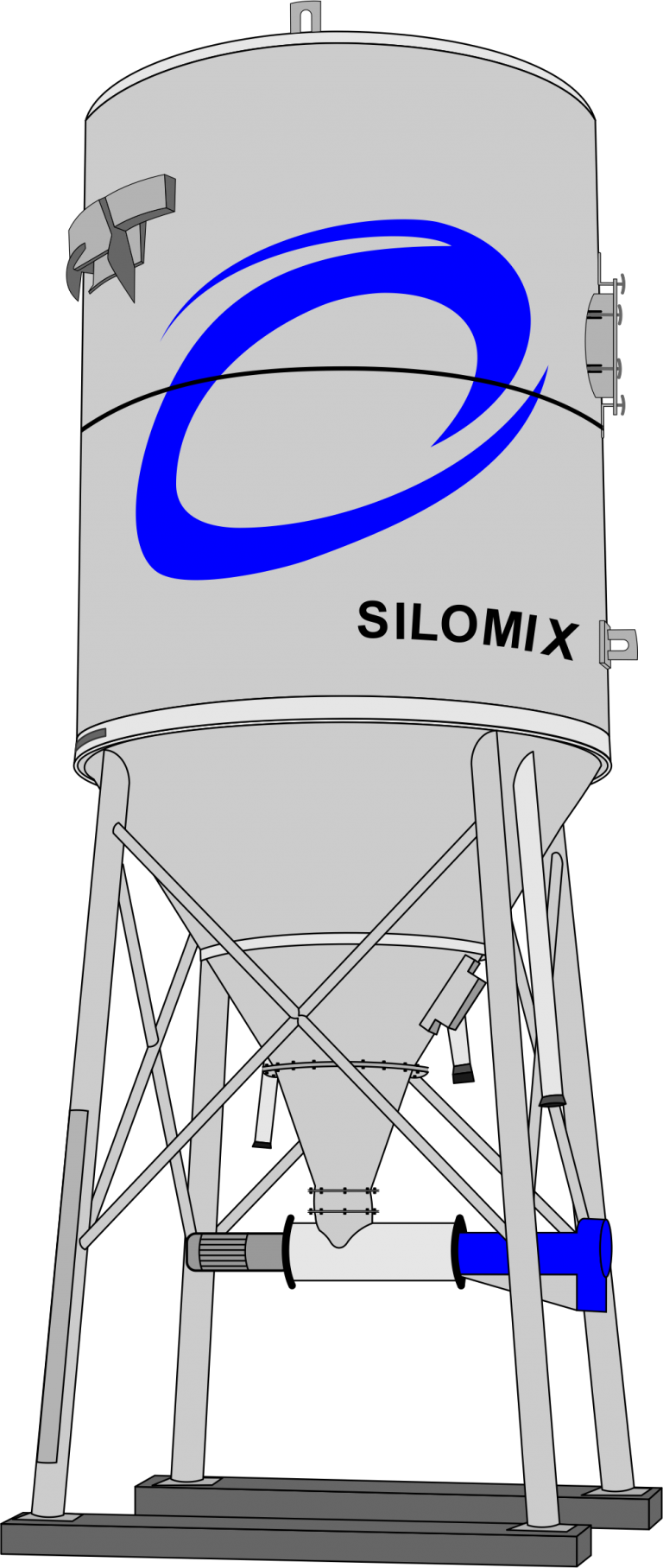
Dry-Silo
The modern equivalent of the traditional weight batching mixer is the dry-silo mortar system that is becoming very popular.
The system involves the delivery of a large stand-alone silo that is charged with the correctly constituted mix materials in a dry state.
The correct amount of water for a mix is automatically measured and added each time by a trained operator.
The silo can hold 33 tonnes of dry mortar, and this will yield 23 cubic metres of mixed mortar.